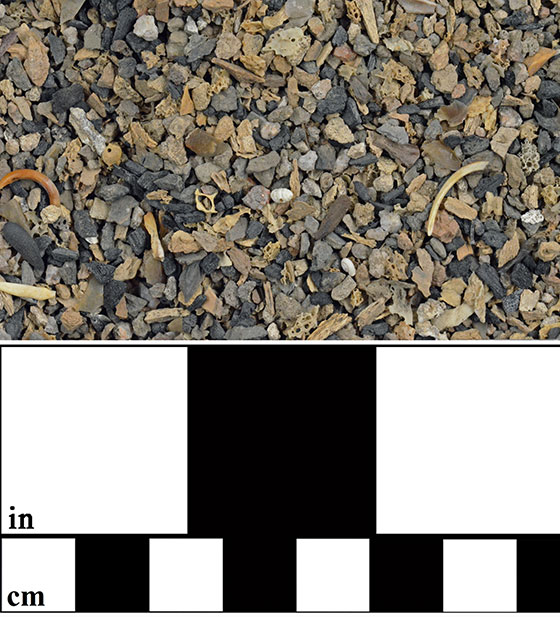What are the typical artifacts found in North Dakota? What do you usually find when you sort artifacts? What does an average box of artifacts from an excavation look like?
These are all questions I have been asked recently. But they are difficult to answer, mostly because there is a lot of variety in North Dakota’s archaeology. People in different times and circumstances used different tools, technologies, and materials—meaning that depending on the age or type of site, the artifacts found will also be different. Artifacts also come in many different sizes—and the size of the artifacts will effect what kinds of things you are looking for or finding.
So, I might not be able to show you what the “average” box of artifacts looks like. But I can show you what one specific box is like, as I have spent the past week sorting it.
The box I am finishing is from the Larson Village site (32BL9). Staff and volunteers have been helping with this project for several years, and we are almost done with the sorting (for more information on Larson Village, see blog.statemuseum.nd.gov/blog/adventures-archaeology-collections-larson-village). There are only about eight boxes left to finish. All those boxes contain the smallest sizes of objects that we currently sort—size grade 4 (anything that slides through a screen mesh 0.111 inch square) and size grade 5 (anything that slides through a screen mesh 0.0469 inches square).
The cardboard box is the size of a banker’s box.
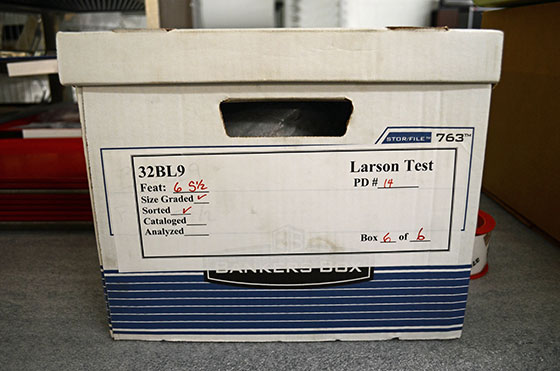
A box of size grade 5 artifacts (2012A.13, 32BL9, from Feature 6 South ½)
This specific box has six bags of size grade 5 materials to sort.
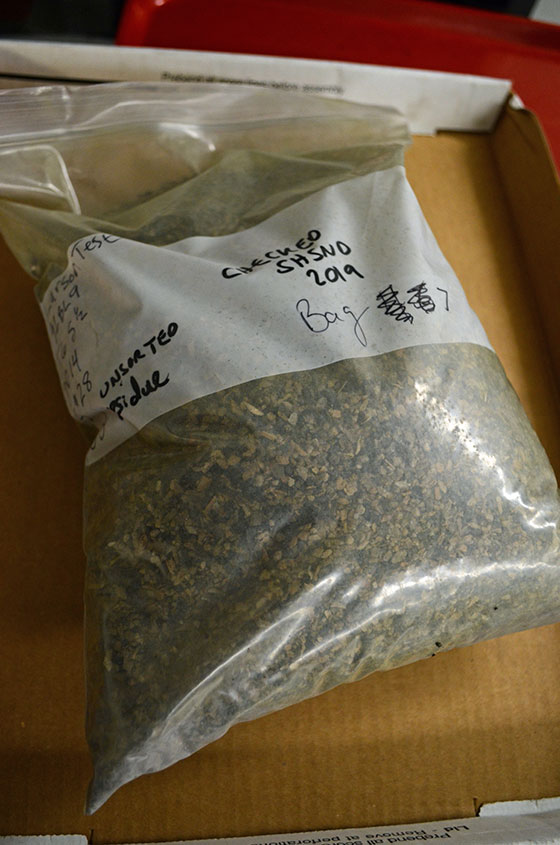
A bag of size grade 5 artifacts. There are six of these bags in my current box.
Would you like to try sorting? Here is your chance! In size grade 5 we sort out only certain types of objects or materials including (but not limited to) identifiable bone, identifiable shell, seeds, and insect parts. What do you see in this photo? (click photo to see larger image)
Can you spot the aritfacts that need to be sorted out?
Hint, there are nine items visible in the above photo that we would sort out in the archaeology lab, including:
-3 small animal teeth
-1 small animal vertebra
-1 insect leg
-2 shells
-2 seeds
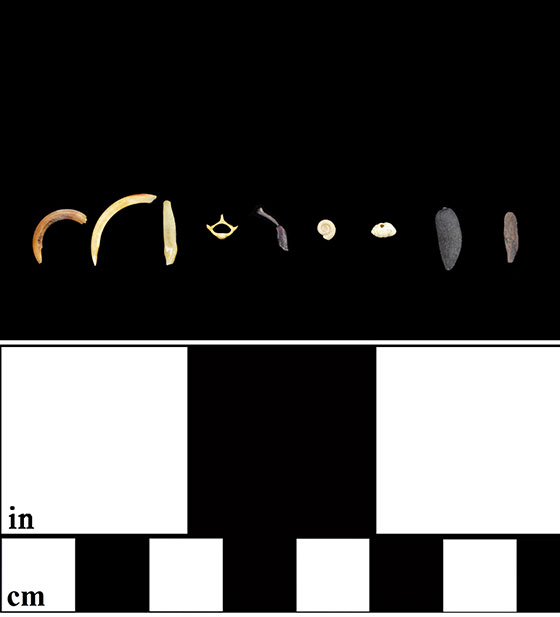
Can you find these items in the previous photo?
Can you find them? (The locations are circled at the end of this post).
So what exactly is in this box? Here is everything that has been found so far (minus the half of a bag I have yet to finish).
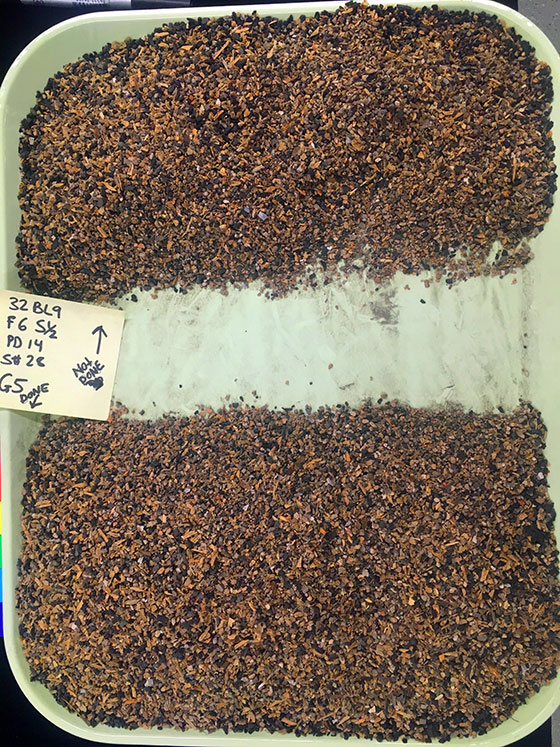
This is the last tray of material from this box. I have not yet finished the top half of the tray.
There is a lot of identifiable animal bone. These will be sent to a faunal analyst (someone who specializes in animal bone).
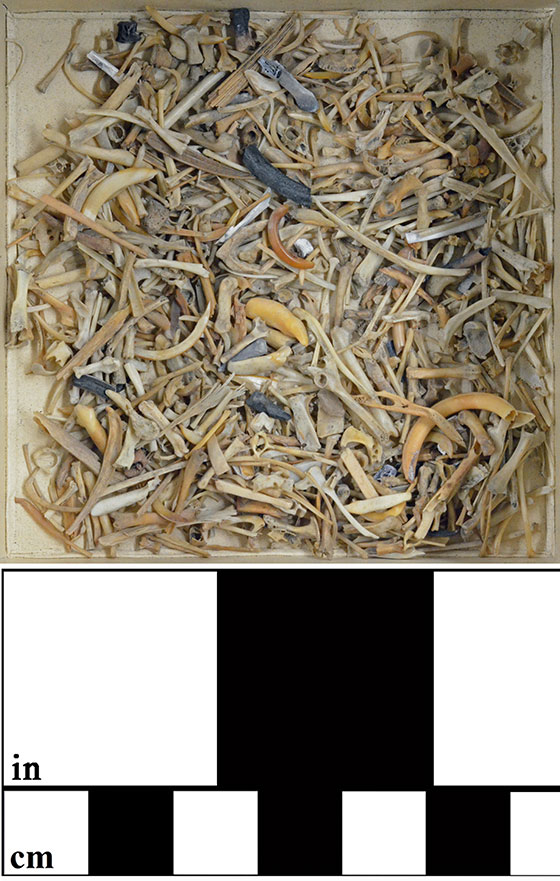
All the identifiable bone found in this box so far (2012A.13)
Modified bone is present too—bone that has been used or made into tools. If you look closely, you can see that these tiny, pointy pieces are very polished and smooth. They are tips from bone awls, used to make holes in leather and hide.
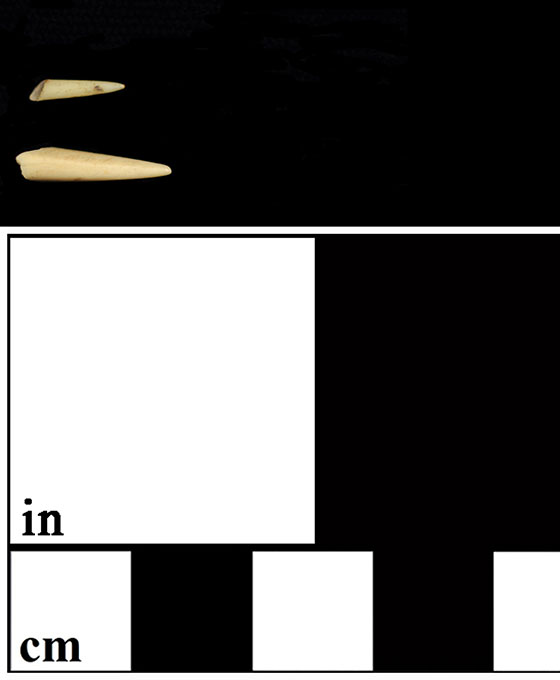
Two awl tips found in this box (2012A.13)

A complete awl from Larson Village—but not from the same box or feature (2012A.13, 32BL9, from Feature 26 North ½)
I have found quite a few gastropods (mollusks like snails). The shells are very difficult to pick out of the tray as they are very fragile. There are also a lot of insect parts—legs, wings, and more.
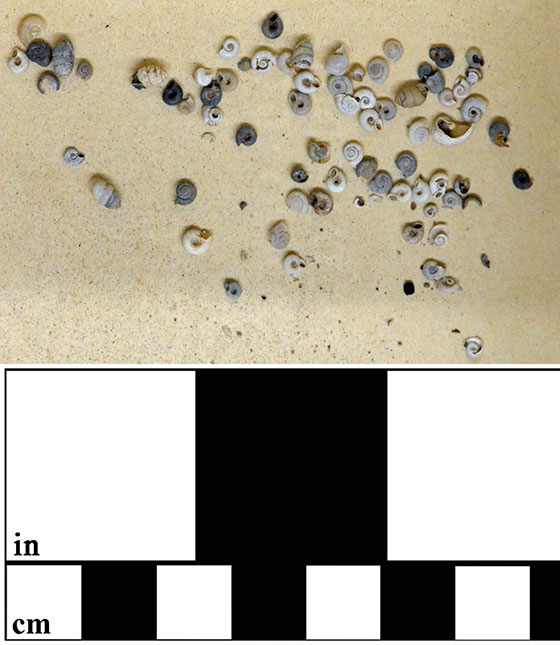
All the gastropods found in this box so far (2012A.13)
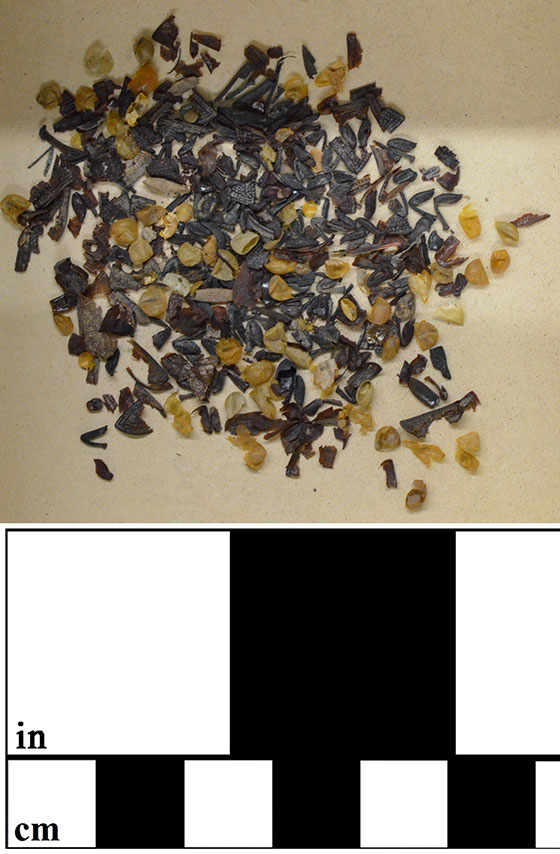
All the insect parts found in this box so far (2012A.13)
Here are chipped stone flakes of obsidian (volcanic glass). Usually we don’t pull out flakes of stone that are this small, but I have set these aside because they are identifiable and have a story. Obsidian does not originate in North Dakota. The closest sources are Wyoming (in the area of Yellowstone National Park) and Idaho. These flakes are evidence of either travel or the extensive trade relationships between the people living at Larson Village and elsewhere.
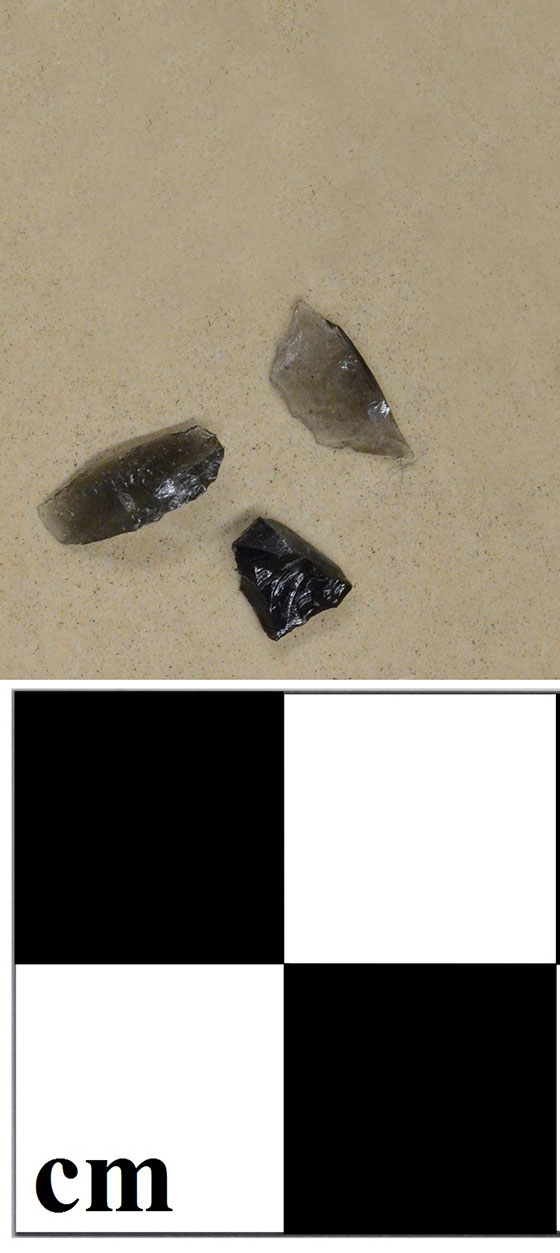
All the obsidian flakes found in this box so far (2012A.13)
Seeds show the kinds of wild plants that were growing around the village or that people were collecting to use, as well as the types of domestic plants people were growing—like sunflowers, corn, and squash.
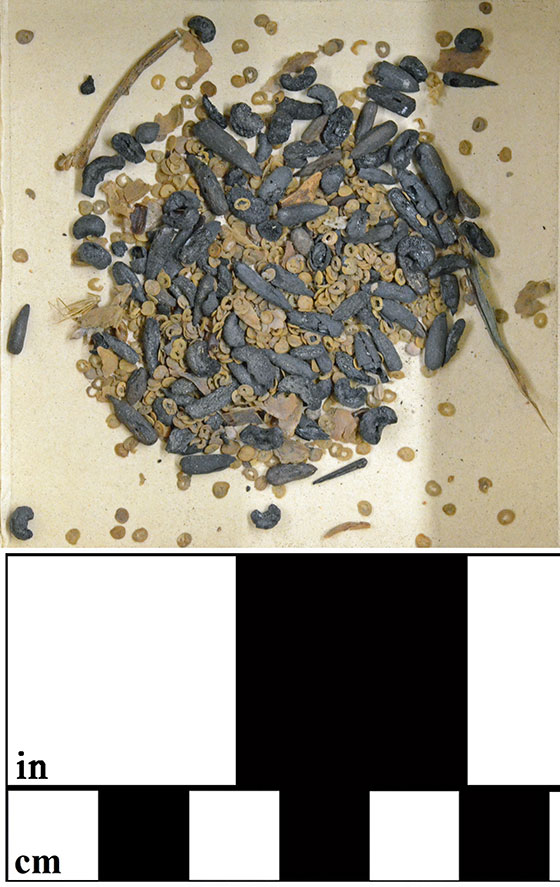
All the seeds found in this box so far (2012A.13)
But what about the leftovers—the pieces we don’t pull out to send to experts to identify and study? You may have guessed: we save it. Why? Because technology and ideas change over time. Technologies that were not possible 50 years ago are possible now—like lipid residue analysis for pottery (to figure out what people were storing or cooking in pots), or obsidian sourcing (to figure out exactly where obsidian material comes from). Even though tiny pieces of unidentifiable charcoal, or fire-cracked rock, or bits of unidentifiable broken bone might not seem useful right now, archaeological methods will eventually change in ways that allow us to draw information from them.
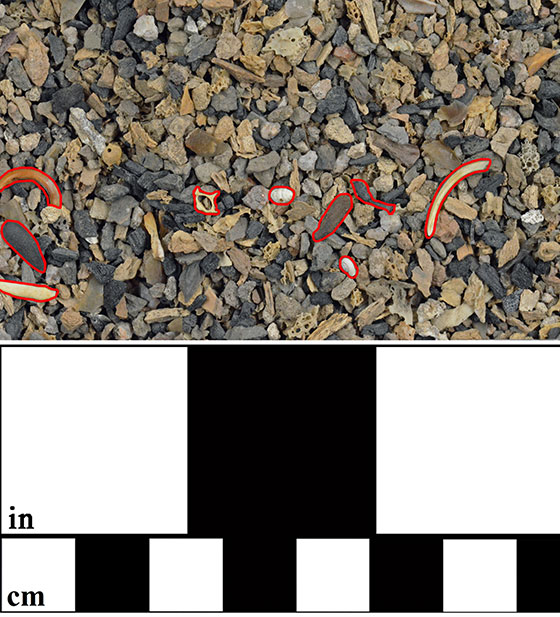
Did you find all the artifacts that need to be sorted?


